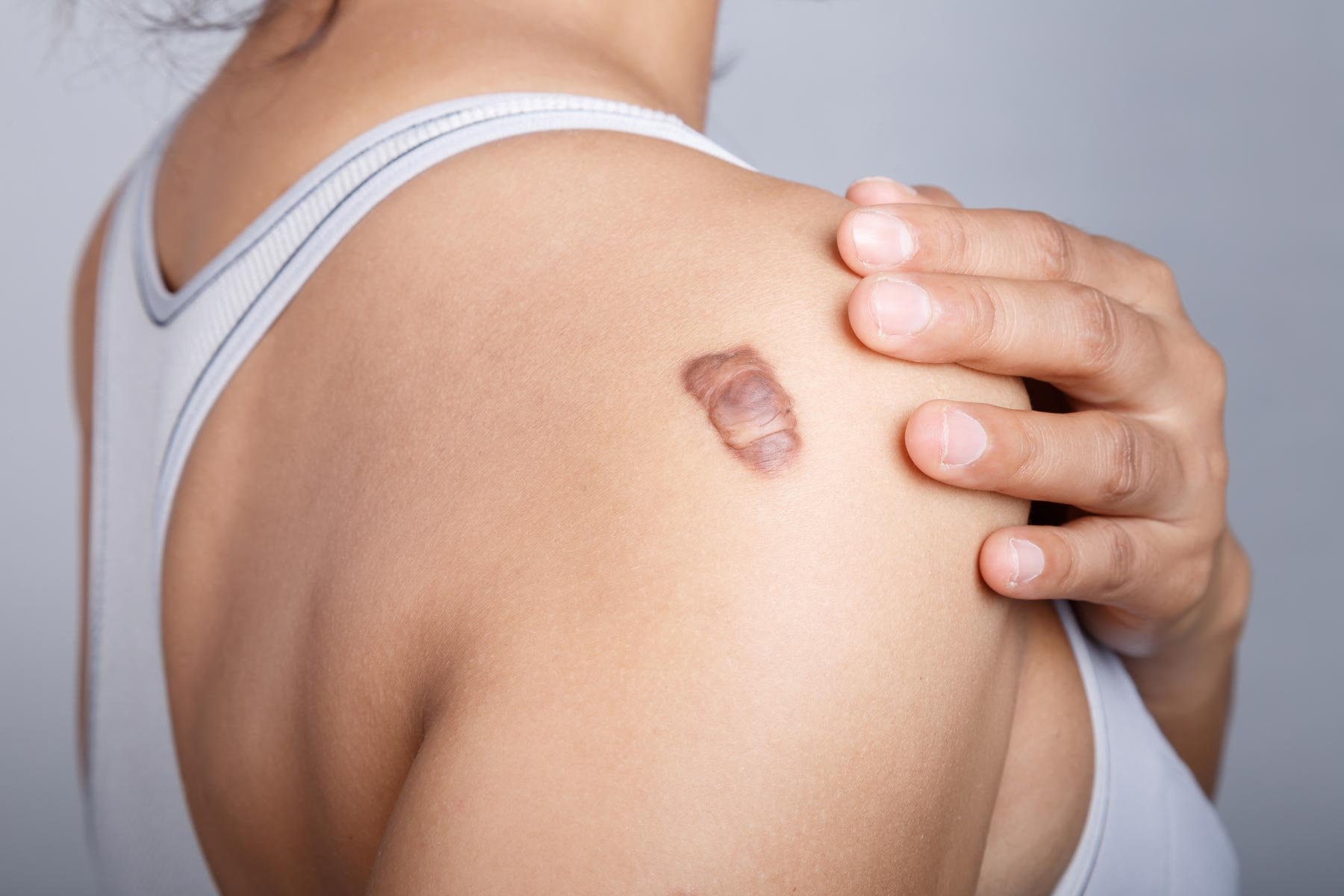
Keloids
Keloids are a type of scar that occur when the body produces too much collagen during the healing process following a cut, burn, or other injury to the skin. Unlike normal scars, which generally fade over time, keloids continue to grow and can become itchy, tender, and unsightly. They can also cause discomfort or interfere with movement if they develop on or near a joint. Keloids are more common in people with dark skin, but they can occur in people of any skin tone.
There are several theories about what causes keloids, but it is not yet fully understood. Some experts believe that they may be due to an overactive immune system or an abnormal response to inflammation. They may also be more likely to occur in people who are prone to scarring or have a family history of keloids.
Keloids are typically round or oval in shape and can vary in size from a few millimeters to several centimeters in diameter. They are most common on the chest, back, shoulders, and earlobes, but can also occur on other parts of the body. Keloids may be pink, red, or brown in color, and may be smooth or slightly raised.
Keloids are benign, which means they are not cancerous. However, they can be cosmetically disfiguring and may cause emotional distress for some people. They can also be prone to infection if they are scratched or punctured.
Treatment for keloids is often challenging and may involve a combination of methods. Options may include:
Corticosteroid injections: These can help to reduce inflammation and flatten the keloid. Injections may be given every few weeks until the keloid begins to shrink.
Silicone sheets or gels: These can help to flatten the keloid and may also help to reduce itching and discomfort.
Pressure dressings: These can help to compress the keloid and prevent it from growing. They may be used in combination with other treatments.
Superficial radiation therapy: This involves the use of low-energy X-rays to shrink the keloid and may be used in combination with other treatments.
Laser therapy: This can help to reduce the size and appearance of the keloid.
Surgical removal: This may be an option for small keloids or those that have not responded to other treatments. However, there is a risk that the keloid will return or grow larger after surgery.
In some cases, preventing keloids from forming in the first place may be the best approach. This may involve avoiding certain activities or situations that could cause injury to the skin, such as body piercing or tattooing. If you are planning to have surgery, it may be helpful to discuss keloids with your surgeon in advance and consider prophylactic treatment to prevent keloids from forming.
Keloids can be a frustrating and distressing condition, but there are options for managing and treating them. If you are concerned about a keloid or think you may be at risk for developing one, it is important to speak with a dermatologist or other healthcare provider. They can help to determine the best course of treatment for your specific needs.

